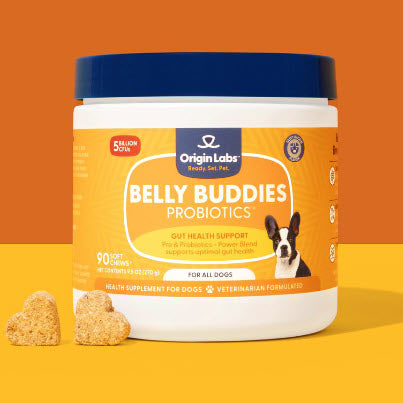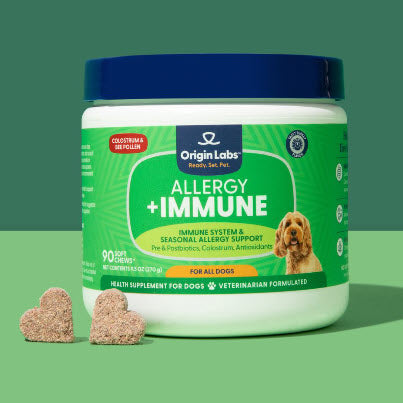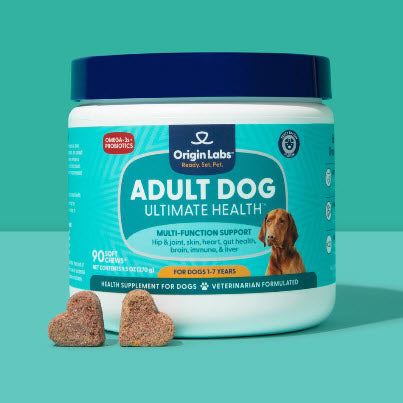Can Dogs Safely Eat Plums?
Pet owners often wonder if dogs can safely eat plums. While the flesh of plums can offer some nutritional benefits, caution must be exercised due to inherent risks.
Understanding the Risks and Benefits
When considering the suitability of plums as a treat for dogs, one must balance their potential health benefits against possible dangers. Plums do contain valuable nutrients; however, the presence of certain toxic elements demands careful consideration.
Examining the Nutritional Value of Plums for Dogs
Plums can provide vitamins and fiber that may complement your dog's diet:
- Vitamins: Plums are rich in vitamin C, which can support the immune system, and vitamin A, essential for eye health.
- Fiber: This helps maintain a healthy digestive system, reducing the chances of constipation or diarrhea.
- Antioxidants: They help combat free radicals in the body, potentially reducing inflammation and supporting overall well-being.
Despite these benefits, concerns about toxicity cannot be ignored. The question of whether plums are toxic to dogs comes into sharp focus when considering plum pits. These contain cyanide, a dangerous compound that can lead to poisoning if ingested by your pet. Additionally, plum pits pose choking hazards and may cause intestinal blockages if swallowed whole.
For owners interested in diversifying their dog's diet with safe fruit options, this article lists fruits that are beneficial for dogs' health. These fruits provide essential vitamins and antioxidants without the risks associated with plums.
In summary, while plums offer certain nutritional advantages for dogs, such as vitamins and fiber, the potential health benefits must be weighed against the risks of cyanide toxicity from pits. Pet owners should carefully remove pits before offering plum flesh to their dogs in small amounts and always keep an eye out for any signs of distress.
2. The Potential Risks and Dangers of Dogs Consuming Plums
When it comes to allowing dogs to consume plums, there are significant risks that should not be overlooked. The dangers associated with feeding plums to canines largely revolve around the plum pits, which can be hazardous for several reasons:
Exploring the Dangers of Plum Pits
- Choking Hazard for Dogs: The size and hardness of plum pits pose a serious choking risk, particularly for smaller breeds or young puppies.
- Intestinal Blockages: If a dog swallows a pit, it could lead to intestinal obstruction. This condition is life-threatening and often requires surgical intervention.
- Toxic Compounds: Beyond the physical risks, plum pits contain compounds that can be toxic when ingested in large quantities.
Cyanide Concerns
Plum pits host a substance called amygdalin which, when metabolized, can release cyanide into a dog's system. Cyanide is a potent chemical that can interfere with cellular oxygen transport, leading to:
- Oxygen deprivation at the cellular level
- Respiratory failure if the cyanide dose is high enough
The presence of cyanide in plum pits means even small amounts can be dangerous if ingested by dogs. Symptoms of cyanide poisoning are severe and can include difficulty breathing, dilated pupils, and shock.
Digestive Issues from Eating Plums Aside from the risks presented by the pit, plums themselves may cause digestive upset in dogs due to their sugar content and natural acids. Overconsumption can lead to stomachaches and diarrhea.
In light of these potential hazards, extreme caution should be exercised when considering plums as a treat for dogs. Ensuring that all parts of the fruit outside of the flesh are inaccessible to your pet is crucial to avoid any adverse health consequences.
3. Symptoms of Plum Poisoning in Dogs
When it comes to identifying symptoms of plum poisoning in dogs, it's crucial to be aware of the signs. This knowledge can be the difference between a minor health scare and a life-threatening situation.
The primary concern with plum consumption in dogs is related to the ingestion of the plum pit, which contains cyanide – a toxic compound. If a dog consumes this, it can lead to various symptoms indicating potential poisoning.
Gastrointestinal Distress
One of the first signs that your dog may have ingested a harmful substance is gastrointestinal distress. This can manifest as:
- Vomiting
- Diarrhea
- Loss of appetite
If your dog exhibits any of these symptoms after consuming plums or their pits, it's essential to seek veterinary attention immediately.
Difficulty Breathing & Other Physical Signs
Alongside GI distress, difficulty breathing is another key sign of potential plum poisoning in dogs. This occurs due to cyanide's effect on the body’s oxygen utilization. Other physical symptoms include:
- Panting
- Red gums
- Watery eyes
- Tremors
Again, these signs require immediate attention from a veterinarian.
Behavioral Changes
Behavioral changes are also indicative of potential issues. You know your pet best — any sudden or drastic change in behavior warrants investigation. Potential behavioral signs of plum poisoning include:
- Increased drooling
- Restlessness or agitation
- Shock or confusion
In severe cases, if left untreated, respiratory collapse can occur leading to potential fatality.
It's important to remember these symptoms are not exclusive to plum poisoning and can indicate other health issues as well. However, if you know your dog has consumed plums or their pits and begins showing these symptoms, prompt veterinary intervention is vital.
4. Can Dogs Eat Prunes? Understanding the Relationship Between Plums and their Dried Counterpart
When it comes to dogs eating prunes, we need to understand how drying plums changes them and whether this makes them a safer or riskier treat for our dogs.
Are Prunes Safe for Dogs to Eat?
Prunes are dried plums, which means they have been dehydrated to remove water and concentrate their nutrients—and their sugars. Here's what you need to know about prunes for dogs:
- Sugar Content: The drying process that turns plums into prunes concentrates natural sugars. This higher sugar level can lead to potential blood sugar spikes and contribute to weight gain in dogs.
- Fiber Concentration: Prunes are known for having lots of fiber, which is good for human digestion in moderation but can cause problems for dogs. Too much fiber can result in stomach upset, diarrhea, or constipation.
- Size and Chewiness: Prunes are small and chewy, which might make them seem like a great snack, but these qualities can actually be dangerous. They can pose a choking risk or cause blockages in the digestive system if not chewed properly.
How Drying Changes Plums
Turning plums into prunes involves more than just removing water. It also affects how the fruit works in a dog's body.
- More Nutrients: When water is taken out during drying, the nutrients in the fruit become more concentrated. While this might seem like a good thing, it also means there's a higher risk of getting too much of certain nutrients.
- Less Water: Fresh fruits like plums have lots of water in them, which helps with hydration. Prunes don't have this water content, so eating too many without drinking enough water could lead to dehydration.
Based on these factors, it's important to be careful when giving prunes to dogs. A small amount might not cause harm, but because they're concentrated and can potentially cause digestive problems, it's generally best to avoid feeding prunes to your dog.
If you want to share fruit with your furry friend, there are safer options available that provide hydration and nutrients without the high sugar content or digestive risks of prunes. We'll discuss these alternatives later in the article.
5. How to Safely Feed Plums to Your Dog: Preparation Tips and Considerations
Ensuring the safety of your furry friend is paramount when feeding plums to dogs safely. In the light of potential risks associated with plum pits, it's crucial to adhere to certain preparation steps and considerations.
Removing the Risk: Ensuring Plum Pits are Properly Extracted
People often underestimate the dangers lurking in the seemingly harmless plum pit. The presence of cyanide, coupled with its hard shell, makes it a choking hazard and a possible source of intestinal blockage for dogs. Hence, it's non-negotiable that all plum pits should be effectively removed before feeding plums to dogs.
- Washing: Start by washing the plum thoroughly under running water to get rid of any pesticides or harmful bacteria.
- Slicing: Use a sharp knife to cut around the pit longitudinally, then twist both halves in opposite directions.
- Pit Removal: Gently use a knife tip or your thumb to push out the pit.
Remember, meticulous pit removal doesn't just prevent choking hazards; it also keeps cyanide-induced poisoning at bay.
However, even with complete pit removal, there are additional considerations for dog owners intending to incorporate plums into their pet’s diet.
- Moderation is key: Even though the flesh of plums is non-toxic for dogs, feeding them too much might lead to upset stomach due to high sugar content.
- Monitor your dog closely: After feeding plums, observe your pet for any unusual behavior or physical discomfort as these could indicate distress.
- Avoid feeding prunes: As discussed earlier, prunes – dried plums – can cause more harm than good due to their high fiber and sugar content.
Dogs are beloved family members and their well-being cannot be compromised. So while it's okay to add some fruit variety to their diet, it's essential to know the right way to do it. With these tips in mind, dog owners can safely navigate feeding plums to dogs.
6. Other Fruits That Are Safe and Healthy for Dogs
To ensure a nutritious yet safe diet for your furry friends, consider diversifying their fruit intake. Not all fruits are suitable, but several options offer considerable health benefits without posing risks like plums. Here's a closer look at some safe fruits for dogs like apples, bananas, and various berries.
Apples: A Crunchy Treat Packed with Vitamins
Apples serve as an excellent source of vitamins A and C, along with dietary fiber. These nutrients support immune health and digestive function in dogs. However, it's crucial to remove the apple seeds and core before serving, as they contain cyanide, similar to plum pits.
How to Serve: Slice the apple into bite-sized chunks suitable for your dog's size.
Bananas : Potassium-Rich Snack for Dogs
Bananas offer a great dose of potassium, vitamin B6, and vitamin C. They're also low in sodium and cholesterol, making them a heart-healthy option. However, given their high sugar content, feed bananas sparingly.
How to Serve: Mash a small amount of banana and mix it into your dog's meal or offer thin slices as treats.
Berries: A Superfood Option for Dogs
Several types of berries are suitable for dogs — including blueberries, blackberries, raspberries, strawberries. They're rich in antioxidants that can help fight inflammation and boost overall health.
- Blueberries: Blueberries are known as a superfood due to their high antioxidant content.
- Blackberries: Blackberries are packed with antioxidants, vitamins C and K.
- Raspberries: Raspberries are low in sugar and high in fiber but should be served in moderation due to their xylitol content.
- Strawberries: Strawberries are high in fiber and vitamin C. They also contain an enzyme that can support dental health.
How to Serve: Berries can be served raw, mashed into meals, or frozen for a refreshing treat.
Remember, no matter what fruit you choose to feed your dog, moderation is key. Too much of any fruit can lead to digestive upset due to the high fiber content. Also, keep an eye on your dog's weight as fruits contain sugars and extra calories.
7. Consulting with a Veterinarian: The Importance of Professional Advice Regarding Your Dog's Diet
When adjusting your dog’s diet to include new items such as fruits, veterinary guidance for dog's diet is essential. A veterinarian's expertise is invaluable for several reasons:
- Individual Dietary Needs: Every dog is unique, with specific dietary requirements based on age, breed, weight, activity level, and health conditions. Vets can provide personalized nutritional advice tailored to your pet’s individual needs.
- Safe Fruit Intake: While certain fruits are safe for dogs in moderation, a vet can help determine the appropriate types and amounts of fruit your dog can safely consume. This includes guidance on whether plums or any other fruit should be part of their diet.
- Monitoring Health Changes: Changes in diet can lead to changes in health. Veterinarians can monitor these changes and suggest dietary adjustments as necessary to ensure your dog remains healthy.
- Understanding Toxicity Risks: Veterinarians are knowledgeable about the toxic risks associated with various foods including plum pits, stems, and leaves. They can educate dog owners on symptoms of toxicity and what precautions to take.
- Preventative Health Care: Regular consultations can help prevent potential health issues arising from diet before they occur. A proactive approach to nutrition contributes to your dog’s overall well-being.
By consulting with a veterinarian before introducing new foods like plums into your dog's diet, you're not only safeguarding their health but also promoting a balanced nutritional plan that supports their longevity and happiness.
8. Final Thoughts on Dogs and Plums
Feeding plums to your dogs requires caution and carefulness. While the flesh of this fruit is not inherently harmful, its high sugar content and the toxicity of other parts necessitate moderation.
Here are some important points to remember about dogs and plums:
- Avoid Ingesting Harmful Parts: It's vital to ensure that no pit, stem, or leaves are ingested, as these contain cyanide-producing compounds.
- Watch Sugar Intake: Excessive consumption of even the safe part, the plum flesh, can lead to sugar overload.
- Monitor for Adverse Reactions: Always monitor your dog after feeding them plums or any new food item for signs of distress or adverse reactions.
Consulting with a veterinarian before introducing new foods into your dog's diet is an essential practice. They can provide tailored advice based on your dog's specific needs and health status. This includes determining whether adding fruits like plums to their diet would be beneficial or potentially harmful.
The decision on whether dogs should eat plums might not be straightforward due to the associated risks. The key rests in being informed about these potential dangers and taking necessary precautions while considering your pet's overall diet and health condition.
Remember: when it comes to our furry friends' well-being, it's better to err on the side of caution!
FAQs (Frequently Asked Questions)
Can dogs safely eat plum flesh?
Yes, dogs can safely consume the flesh of a plum, but it's critical to take into account a few key factors. The quantity should be limited as the sugar content in plums can be high. Just like in humans, excessive sugar intake in dogs can lead to health problems such as obesity and diabetes.
While small amounts of plum flesh can be a treat for your dog, it's important to closely monitor them for any potential adverse reactions.
Remember: Always remove the pit and any leaves or stems before giving your dog plum flesh. These parts contain cyanide-producing compounds which are toxic to dogs.
Are there any alternatives to plums that are safer for dogs?
Absolutely! There are plenty of fruits that are not only safe for your canine companion but also offer numerous health benefits. Some examples include:
- Apples: High in fiber and vitamin C, apples can be a refreshing snack for your dog. Make sure to remove the seeds and core before serving.
- Bananas: Rich in potassium and vitamins, bananas are a great low-calorie treat for dogs. However, due to their high sugar content, they should only be given in moderation.
- Watermelon: A hydrating fruit with high water content, watermelon is perfect on a hot day. Remember to remove any seeds and the rind.
What should I do if my dog accidentally eats a plum pit?
If your dog unintentionally ingests a plum pit, it's crucial to act promptly and contact your veterinarian right away. Plum pits contain cyanide-producing compounds which can cause severe health issues in dogs if not treated immediately.
Are there any signs or symptoms I should watch out for after feeding my dog plums?
After feeding your dog plums, pay close attention to their behavior and physical condition. If you observe symptoms such as vomiting, diarrhea, abdominal pain, excessive drooling, or changes in behavior like lethargy or restlessness, it's important to consult your vet immediately.
Note: These symptoms could indicate a reaction to the plum or possibly a sign of pit ingestion.
As always with introducing new foods to your pet's diet, moderation and precaution are crucial. Your dog's overall health and well-being should always be the top priority over any potential treats.








